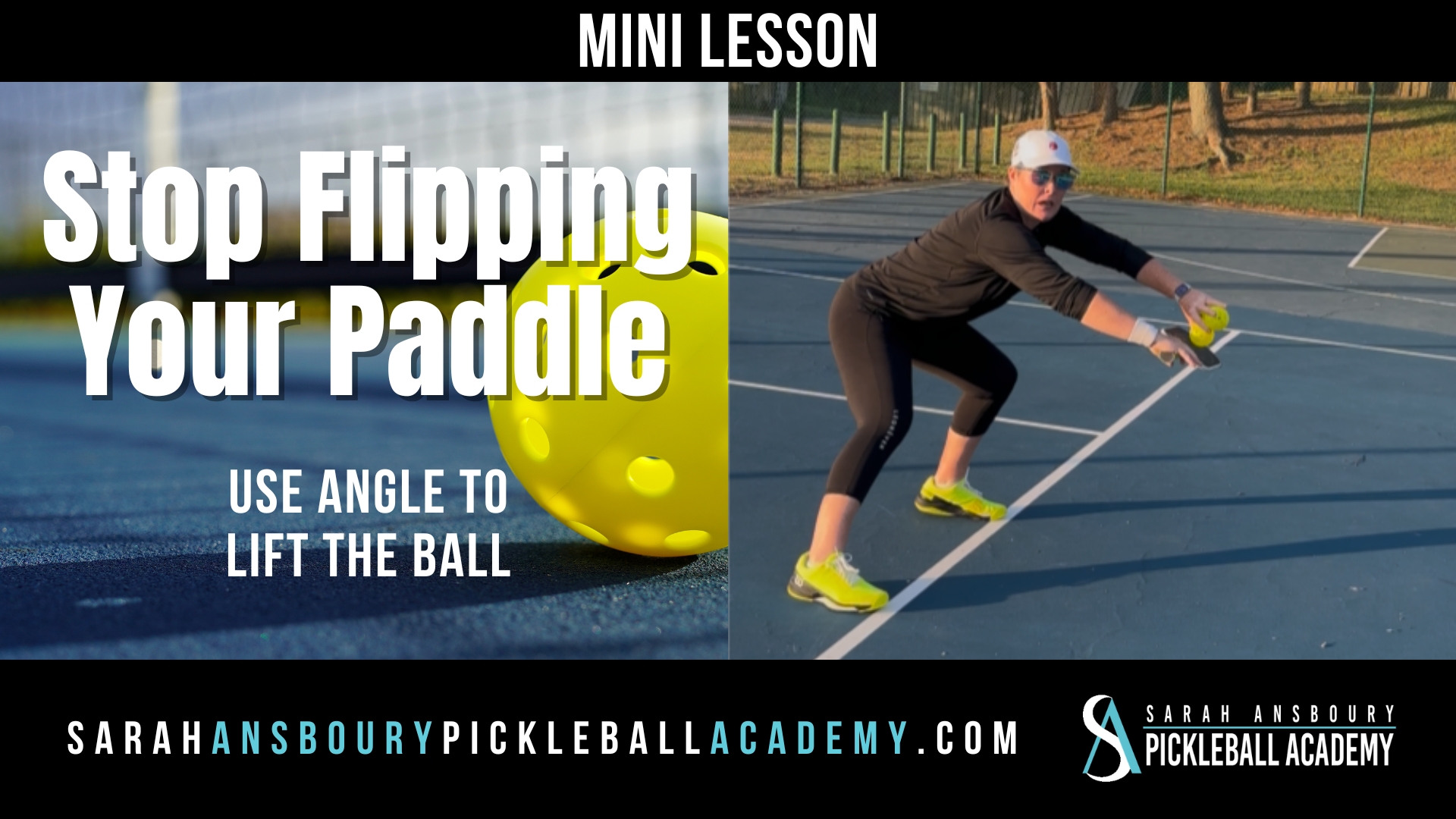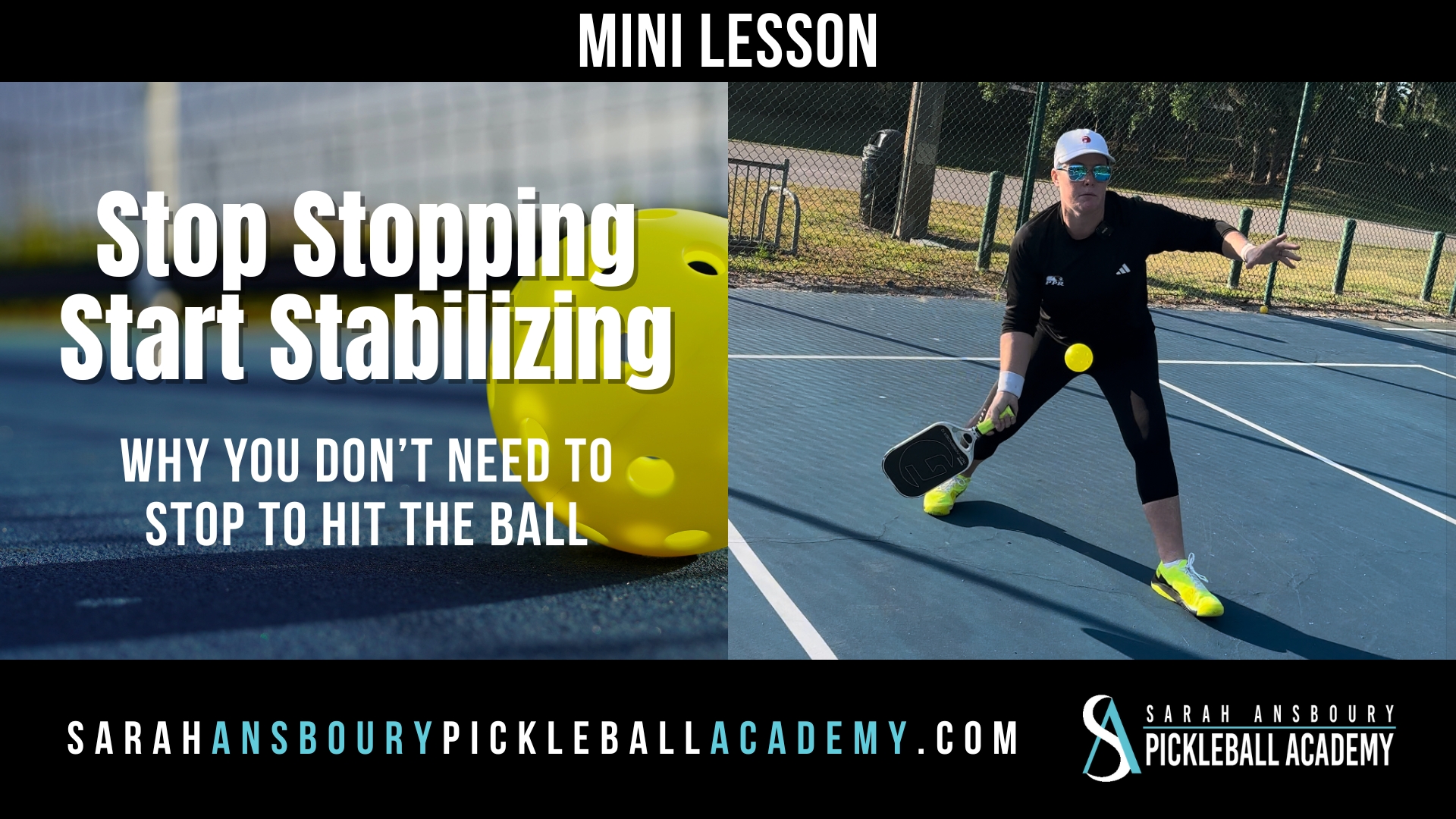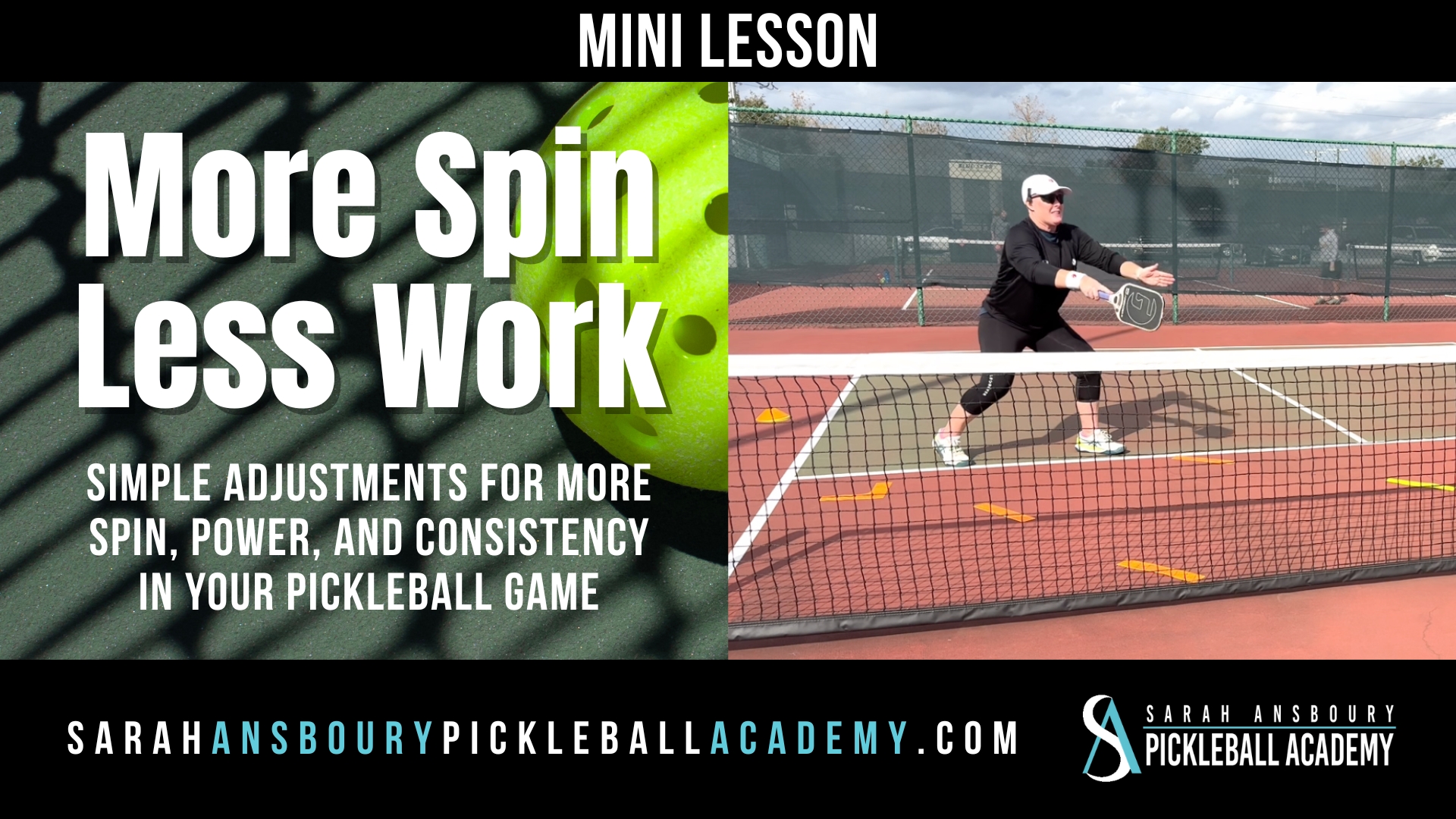As an instructor. I think it is important not only to teach what I want a student to do but also why. Understanding the “why” is particularly important when it comes to pickleball strategy. If you understand the why of one strategy, you are then able to apply it to others.

Pickleball Strategy: Get to the Line
I’m sure early on you were told to “get to the line”. Certainly, this is one of the most important strategies when playing pickleball. But do you know why? Perhaps you are saying, “That is where most points are won.” Correct, but why? “Well it is a more offensive position,” you respond. Correct again, but why? “Well, because everyone told me too….”
Why Getting to the Line is Important
Let’s begin by explaining just three of the “whys” related to capturing the non-volley zone line. When you capture the net, and your opponent does not:
- You have more time to respond: Assuming you hit the ball to the person at the baseline, you and your opponent have more time than your opponent.
- You have more room to hit: Notice how much court is available to the left side net player when their opponents are in this position. Nearly two-thirds of the court is available. And if the ball is hit to the player on the right, then half of the court is available.
- You can focus on one player: By continuing to hit to the baseline player you have created a 2 against one strategy against your opponent. We have all been in this situation, and we know how demoralizing it can be when we feel ganged up on.
Applying the Whys to Pickleball Strategy
By understanding these three “whys”, we can now apply this to pickleball strategy in other aspects of the game. For example:
- More Time to Respond: In general terms, you want to choose a shot that gives you more time to reset after hitting it. So the “safer” shot in the scenario, above is to hit the ball to the baseline person. We see the effect of not choosing the shot that gives us more time when we start a volleying rally too early and lose the war.
More Room: If the left side net person is moved toward the sideline, he has the opportunity to hit a ball at an angle behind his net opponent while safely traveling over the middle of the court. By understanding this, we can see the danger and advantages angles offer in pickleball. Or put another way, you don’t want to create angles for your opponent! In fact, by hitting to our opponent closer to the middle of the court, we not only increase our margin for error but also reduce the angles our opponents can use against us.- Singular Focus: By focusing on one player we consider fewer options. Fewer options promote less thinking, and second-guessing, which allows our athletic ability to take over. Every one of us has been ready to return a serve, having selected a target, and then as the ball approaches, we change our mind. This often results in a poor return of serve, perhaps even into the net or out. The more we can clear our minds from thinking, or distractions, the more we can allow our natural abilities to respond.
Understand Why
Of course, there are more “whys” to the pickleball strategy of getting to the line! My point here is that you don’t only want to understand what you should do, but also why. If you are working with a coach, make sure they are helping you understand not only the “what’s” but the “whys”. Understanding the “whys” makes you a student of the game and ensures you will progress in your journey more quickly.
Update: It took me quite a while, but I released a book on pickleball strategy in September 2018. It is called the 5 Steps to Better Pickleball.










